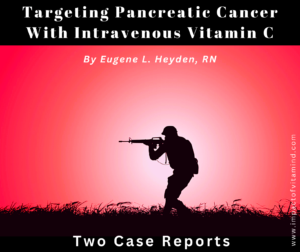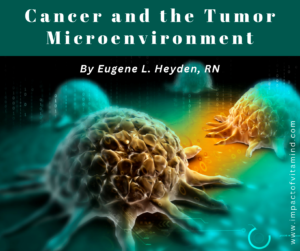I Like What I Am Learning About Lactoferrin and Cancer

By Eugene L. Heyden, RN
“LF [lactoferrin] acts as a multipotent protective factor both by acting on DNA, activating transcription factors, gene expression, regulating the cell cycle, differentiation and leading to the death of cells that threaten the body, such as cancer cells.” ~ Bukowska-Ośko et al., 2022
“As a matter of fact, Lf shows high bioavailability after oral administration, high selectivity toward cancer cells, no significant side effect and a wide range of molecular targets controlling tumor proliferation, survival, migration, invasion, and metastasization. Of note, Lf, according to the system it acts upon, is able to trigger differential outcomes. Indeed, Lf exerts positive or negative effects on cell cycle progression and cell migration towards normal and cancer cells, respectively. Moreover, Lf can prevent development or inhibit cancer growth by boosting adaptive immune response.” ~ Cutone et al., 2020, emphasis added
If the above doesn’t grab your attention, then nothing will. I hope you read it carefully. Imagine, a natural, safe product that can inhibit the growth of cancer, limit its spread, control its fate. If you have cancer, you are in need of what lactoferrin has to offer. Indeed, “It has been confirmed that, in the presence of LF, various cancer cells undergo remarkable damage such as cell cycle arrest, damage to the cytoskeleton and induction of apoptosis [self-inflicted cell death], as well as decreased cell migration.” (Kowalczyk et al., 2022, emphasis added) In the battle against cancer, if you can damage and induce the death of a cancer cell, then you’re on the right track.
Since it was first isolated from cow’s milk in 1939 (Bukowska-Ośko et al., 2022), research efforts have revealed a remarkable molecule that is produced by cells that line body passages, produced as a first line defense against bacterial invasion (Kruzel and Actor, 2017). Further studies revealed that lactoferrin is also produced by immune cells to produce a variety of actions, and for a variety of reasons, one of which is to control proper cellular growth (Cutone et al., 2020). It even deals with growth that is improper, encouraging the cell to die (Dong et al., 2020; Kowalczyk et al., 2022). You want cells that grow improperly to not see another day. And cells that divide like there is no tomorrow, you want them dead, too. And silly cancer cell, it thinks it will benefit from an increase in the uptake of lactoferrin. “Tumor cells are widely known to be overexpressing LF receptors in order to fulfill the elevated nutritional demands of these highly proliferating cells.” (Sabra and Agwa, 2020) Little does it know, lactoferrin is out to kill. And if it can’t kill the cancer cell, it can harm it in other ways. Let’s take a look.
The anticancer properties of lactoferrin include:
- The activation of Natural Killer (NK) cells—mobile immune cells that identify and kill cancer cells (Cutone et al., 2020)
- The inhibition of the expression of survivin, a molecule found in cancer cells that block the cell-death process (Cutone et al., 2020)
- A reduction in the production of VEGF, a molecule that stimulates blood vessel growth, serving to aid in cancer growth and persistence (Cutone et al., 2020)
- Boosting the adaptive immune response (Cutone et al., 2020)
- Increasing the efficacy of chemotherapy (Cutone et al., 2020)
- Increasing the expression of identifiable receptors on cancer cells, allowing easier recognition by the immune system (Bukowska-Ośko et al., 2022)
- Triggering (following entry within the cell nucleus) “the expression of a variety of genes, including genes related to the innate immune response” as well as “genes promoting apoptotic [suicidal] cell death, and these genes that codes proteins showing antiproliferating and anti-cancer activity.” (Bukowska-Ośko et al., 2022)
- Exhibiting “a lytic [physically disrupting] effect on cancer cells. Importantly, it acts selectively, showing greater cytotoxicity towards neoplastic cells than normal ones.” (Bukowska-Ośko et al., 2022)
- Acting “as a positive regulator of proliferation in normal cells, while exerting a predominant inhibitory effect versus transformed and cancer cells, thus highlighting once again its innate selectivity and differential potential.” (Cutone et al., 2020)
- Reducing the numbers of the immunosuppressive MDSC cells within the tumor microenvironment, allowing T cells to become less restrained and more active within the tumor microenvironment (Wei at al., 2020)
- Promoting antibody production (Wei et al., 2020)
- Acting to reduce the growth of blood vessels leading to the tumor, thereby reducing the “the size of tumors and the possibility of metastasis formation.” (Bukowska-Ośko et al., 2022)
We must move on. I seem to have run out of those big black dots.
As you can see from the above, much could be gained by adding lactoferrin to a treatment regime aimed at defeating cancer. Indeed,
“Despite most of the chemotherapeutic agents are addressed to arrest cell cycle and to induce cytotoxicity in cancer cells, they usually do not discriminate between normal and cancer cells, thus leading to a series of adverse and dramatic effects on patients. Conversely, Lf has been described to act as a selective agent with regard to cancer and normal cells. As a matter of fact, Lf was found to mainly act as a positive regulator of proliferation in normal cells, while exerting a predominant inhibitory effect versus transformed and cancer cells, thus highlighting once again its innate selectivity and differential potential.” (Cutone et al., 2020)
“Moreover, it [LF] possesses cytotoxic properties and induces apoptosis. LF plays an important function in the homeostasis of the entire immune system, reduces oxidative stress at the molecular level as well as local inflammation.” (Bukowska-Ośko et al., 2022, emphasis added)
So, how do you reap the benefits of lactoferrin? Eazy! You supplement with lactoferrin. And, of course, you do so with the approval of your physician.
“Lf shows high bioavailability after oral administration, high selectivity toward cancer cells, and a wide range of molecular targets controlling tumor proliferation, survival, migration, invasion, and metastasization.” (Cutone et al., 2020)
Now regarding dosage:
“In a recent non – small cell lung cancer trial, 10 patients were given oral lactoferrin up to 9 g/d without any hematologic, hepatic, or renal toxicities. This exceptional safety profile makes lactoferrin attractive as a primary chemotherapeutic agent in addition to being a possible adjuvant.” (Wolf et al, 2007)
“Several tests in both animals and humans have proven its safety and tolerability, even at high dosages. In particular, no adverse effect was observed in both rats orally administered with bLf [bovine lactoferrin] at 2 g/kg per 13 days and in humans with 1.5–9 g of rhLf [recombinant human lactoferrin] per 15 days. Non-invasive administration routes remain preferable in humans and among them, although bearing some limitations, oral management represents a safe and practical approach for Lf supplementation.” (Cutone et al., 2020)
Some experts believe “oral administration should be performed before meals so to avoid its gastric degradation due to very low pH during digestion.” (Cutone et al., 2020) Alternatively, one could take enteric coated lactoferrin (by first slipping the lactoferrin capsule into an empty, larger enteric capsule). On the other hand, evidence exists that even if the lactoferrin molecule is first digested, its breakdown fragments are still an effective weapon against cancer (Cutone et al., 2020; Massodi et al., 2009; Zhang et al., 2014).
Let’s end our story with a few more thoughts from the experts.
“LF is also a potent anti-viral, immune modulatory and an anti-cancer alternative with integrated inhibitory pathways similar to the effect of chemotherapeutic drugs, but with no side effects. As a result, it could be administrated in combination with conventional therapies so as to minimize the administrated doses and enhance their therapeutic efficacy.” (Sabra and Agwa, 2020)
“As a matter of fact, Lf shows high bioavailability after oral administration, high selectivity toward cancer cells, no significant side effect and a wide range of molecular targets controlling tumor proliferation, survival, migration, invasion, and metastasization. Of note, Lf, according to the system it acts upon, is able to trigger differential outcomes. Indeed, Lf exerts positive or negative effects on cell cycle progression and cell migration towards normal and cancer cells, respectively. Moreover, Lf can prevent development or inhibit cancer growth by boosting adaptive immune response. The ability of Lf to cross the blood–brain barrier makes it a powerful tool to treat brain tumors. Lastly, Lf was recently found to be an ideal carrier for chemotherapeutics, thus globally appearing as a promising tool for cancer prevention and treatment, especially in combination therapies.” (Cutone et al., 2020)
So, it looks like to me, lactoferrin supplementation, and in relevant amounts, would be a good complimentary therapy, added to other therapies that are used to defeat the evil we call cancer. And with respect to pancreatic cancer, a difficult-to-treat cancer that I’m not particularly happy with at the moment, lactoferrin appears a promising therapy (see Kowalczyk et al., 2022).
Related posts: (Click image to view)
References
Bukowska-Ośko I, Sulejczak D, Kaczyńska K, Kleczkowska P, Kramkowski K, Popiel M, Wietrak E, Kowalczyk P. Lactoferrin as a Human Genome “Guardian”—An Overall Point of View. International Journal of Molecular Sciences. 2022 May 8;23(9):5248. https://www.mdpi.com/1622062
Cutone A, Rosa L, Ianiro G, Lepanto MS, Bonaccorsi di Patti MC, Valenti P, Musci G. Lactoferrin’s anti-cancer properties: Safety, selectivity, and wide range of action. Biomolecules. 2020 Mar 15;10(3):456. https://www.mdpi.com/665518
Dong H, Yang Y, Gao C, Sun H, Wang H, Hong C, Wang J, Gong F, Gao X. Lactoferrin-containing immunocomplex mediates antitumor effects by resetting tumor-associated macrophages to M1 phenotype. Journal for ImmunoTherapy of Cancer. 2020;8(1). https://www.ncbi.nlm.nih.gov/pmc/articles/PMC7174070/
Kruzel ML, Zimecki M, Actor JK. Lactoferrin in a context of inflammation-induced pathology. Frontiers in immunology. 2017 Nov 6;8:1438. https://www.frontiersin.org/articles/10.3389/fimmu.2017.01438/full
Kowalczyk P, Kaczyńska K, Kleczkowska P, Bukowska-Ośko I, Kramkowski K, Sulejczak D. The lactoferrin phenomenon—A miracle molecule. Molecules. 2022 May 4;27(9):2941. https://www.mdpi.com/1616864
Massodi I, Thomas E, Raucher D. Application of thermally responsive elastin-like polypeptide fused to a lactoferrin-derived peptide for treatment of pancreatic cancer. Molecules. 2009 Jun 4;14(6):1999-2015. https://www.mdpi.com/10266
Sabra S, Agwa MM. Lactoferrin, a unique molecule with diverse therapeutical and nanotechnological applications. International Journal of Biological Macromolecules. 2020 Dec 1;164:1046-60. https://www.sciencedirect.com/science/article/pii/S014181302033926X
Wei L, Zhang X, Wang J, Ye Q, Zheng X, Peng Q, Zheng Y, Liu P, Zhang X, Li Z, Liu C. Lactoferrin deficiency induces a pro-metastatic tumor microenvironment through recruiting myeloid-derived suppressor cells in mice. Oncogene. 2020 Jan 2;39(1):122-35. https://www.nature.com/articles/s41388-019-0970-8
Wolf JS, Li G, Varadhachary A, Petrak K, Schneyer M, Li D, Ongkasuwan J, Zhang X, Taylor RJ, Strome SE, O’Malley Jr BW. Oral lactoferrin results in T cell–dependent tumor inhibition of head and neck squamous cell carcinoma in vivo. Clinical Cancer Research. 2007 Mar 1;13(5):1601-10. https://aacrjournals.org/clincancerres/article-abstract/13/5/1601/195790
Zhang Y, Lima CF, Rodrigues LR. Anticancer effects of lactoferrin: Underlying mechanisms and future trends in cancer therapy. Nutrition reviews. 2014 Dec 1;72(12):763-73. https://academic.oup.com/nutritionreviews/article-abstract/72/12/763/1840536
DISCLAIMER: This article is offered solely for informational purposes. The information contained therein and opinions expressed should be evaluated for accuracy and validity in the context of opposing data, new information, and the views and recommendations of a qualified health care professional, and not to be substituted for professional judgment and guidance or to provide a reason to neglect or delay appropriate medical care for self or for others. It is the reader and reader only who bears the responsibility for any actions that could be construed as being a response to the information presented. The statements and opinions expressed by the author have not been reviewed or approved by the FDA or by any other authoritative body, nor is the author endorsing any product or specific therapy mentioned. This article and the opinions contained therein are offered to the reader to broaden his or her understanding of the issues discussed and to help identify options that may be suitable for the individual to pursue, on behalf of self or others, under approval and direction of a qualified physician or medical team member. All questions of a medical nature which arise from reading this article should be directed at qualified health care professional. There are no guarantees that a suggested website and internal links are safe to visit or open or are currently available.
Copyright © 2023 Eugene L. Heyden, RN
All Rights Reserved




